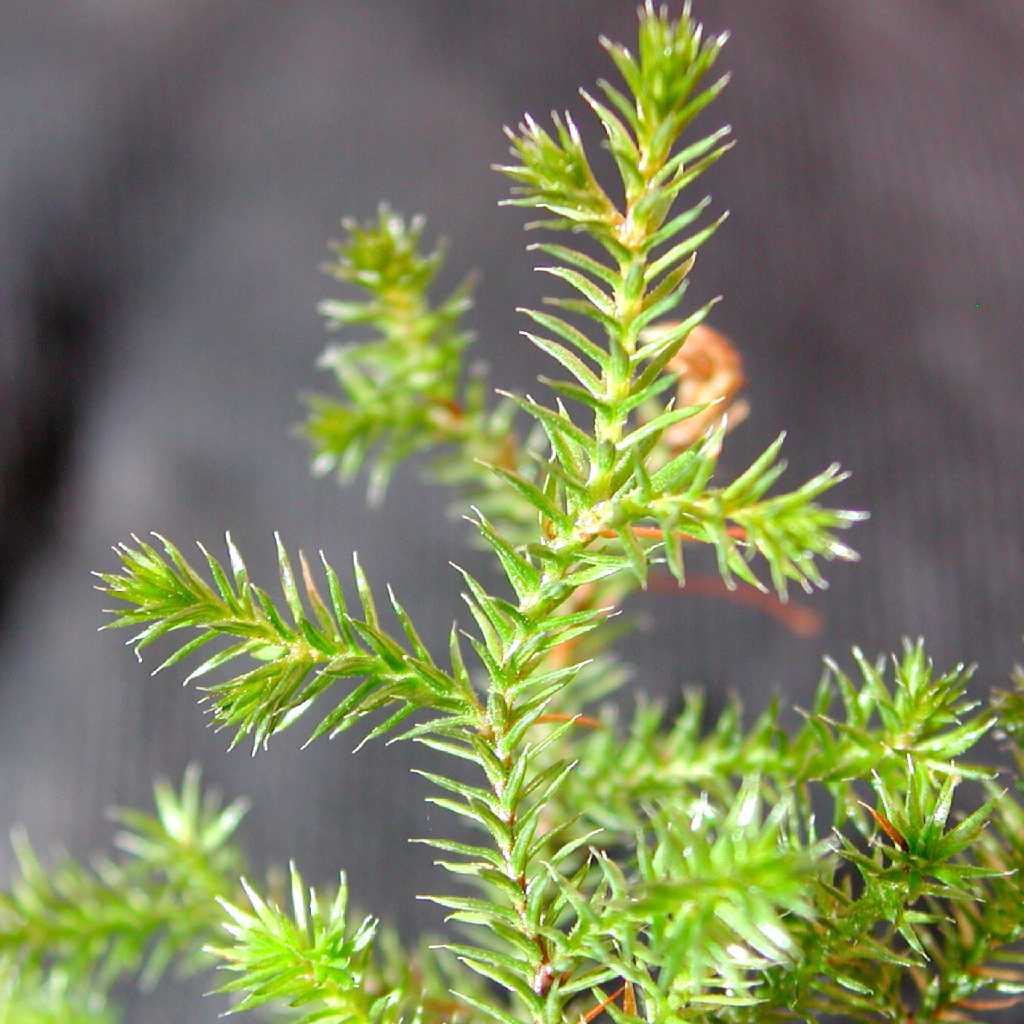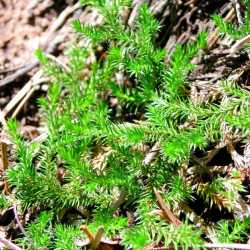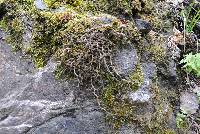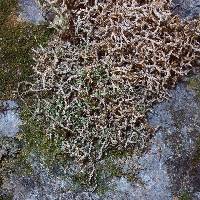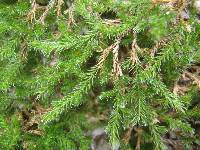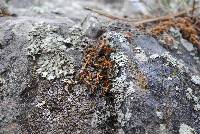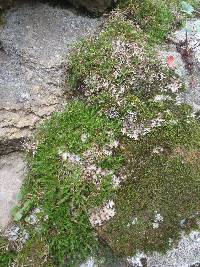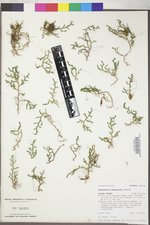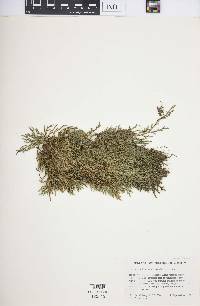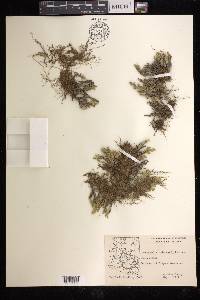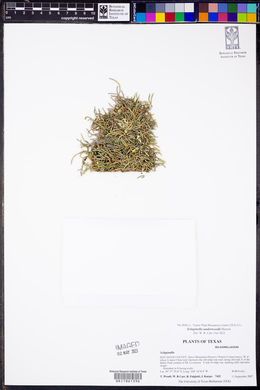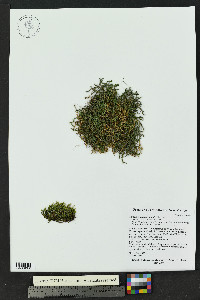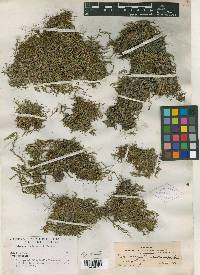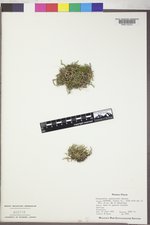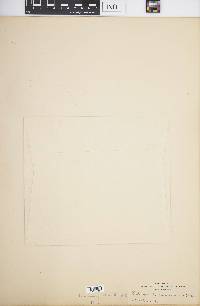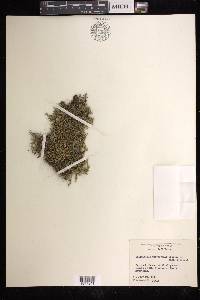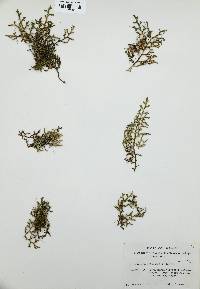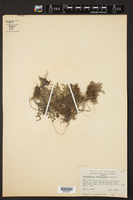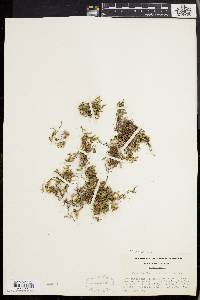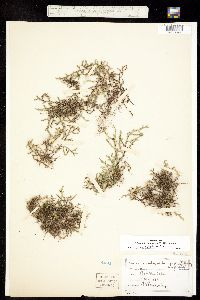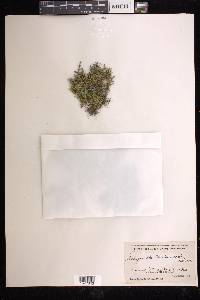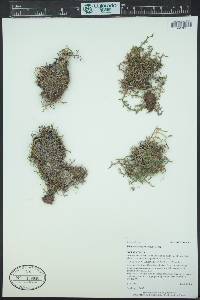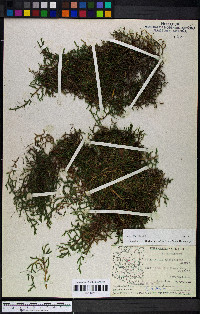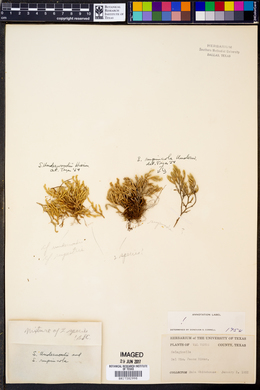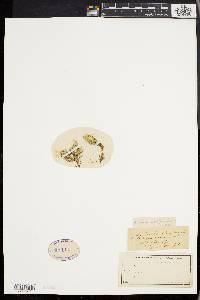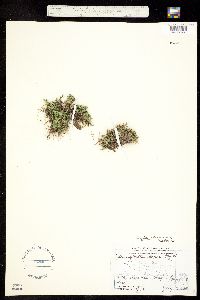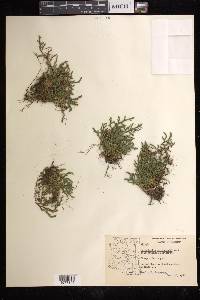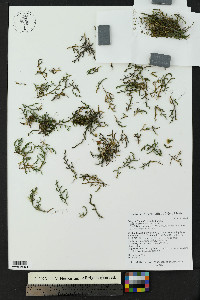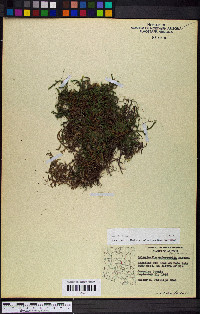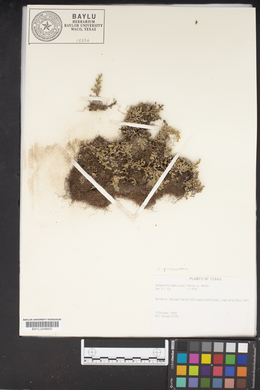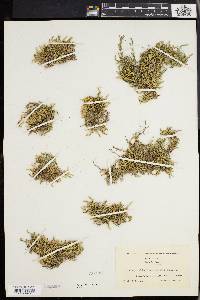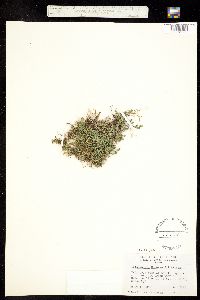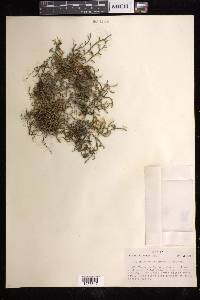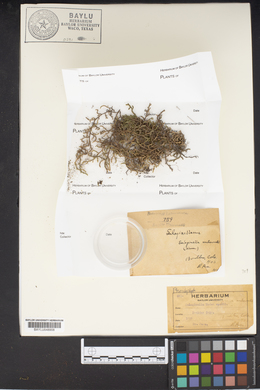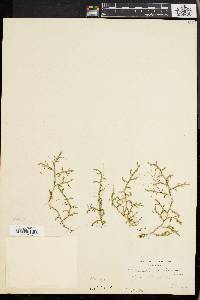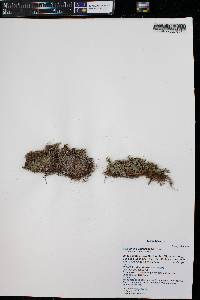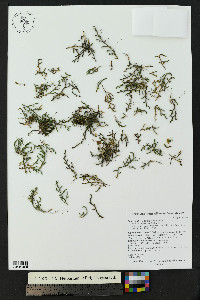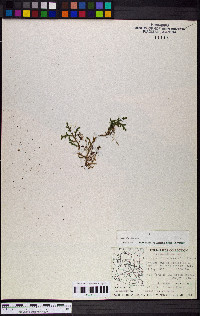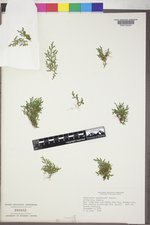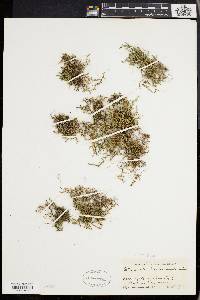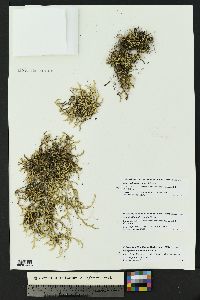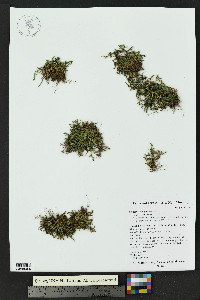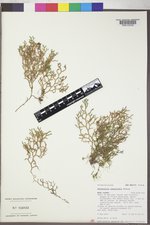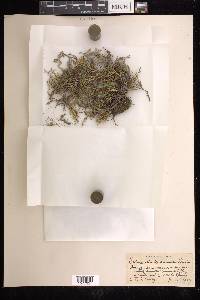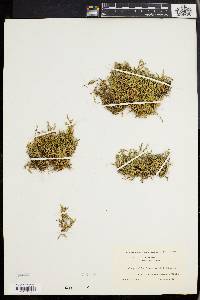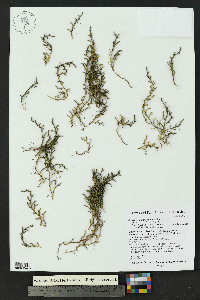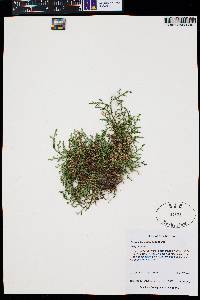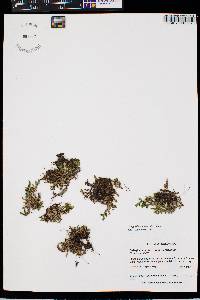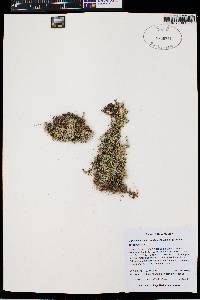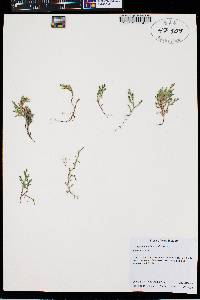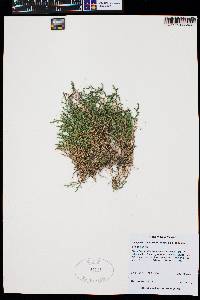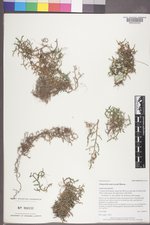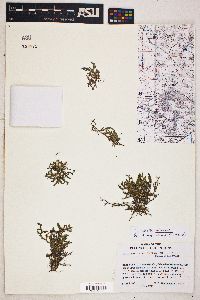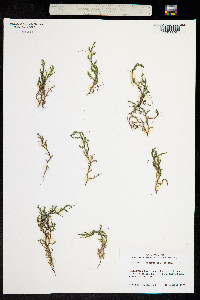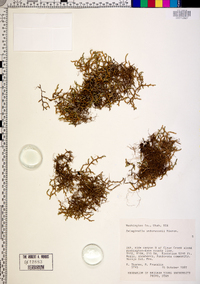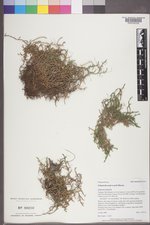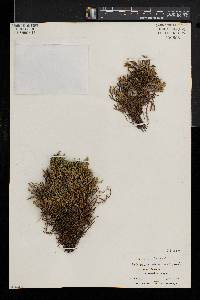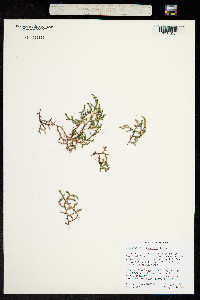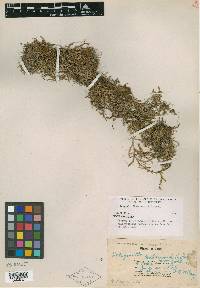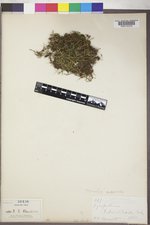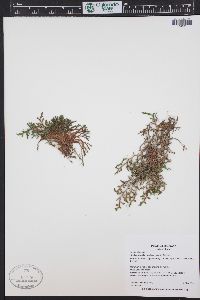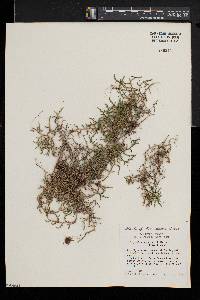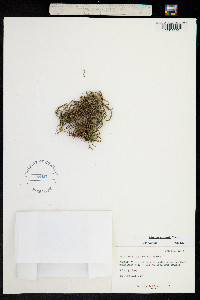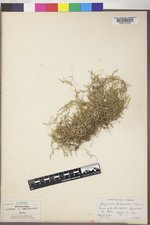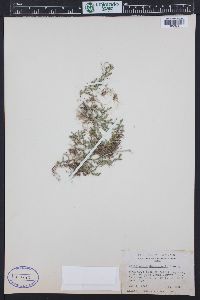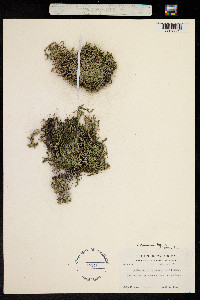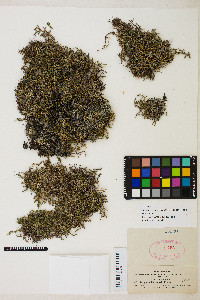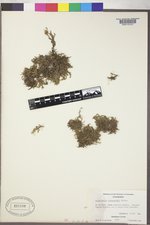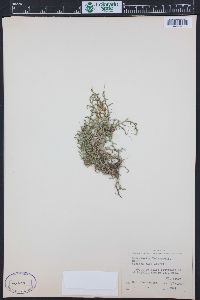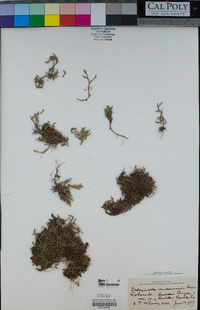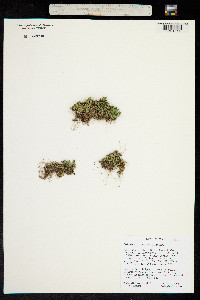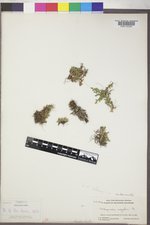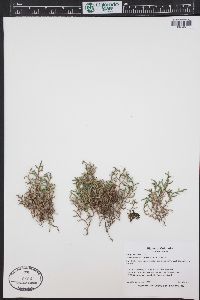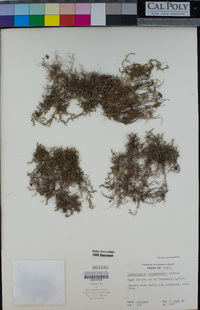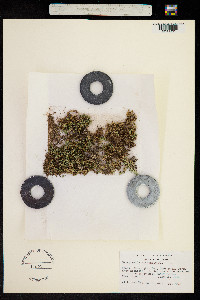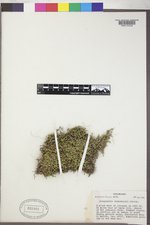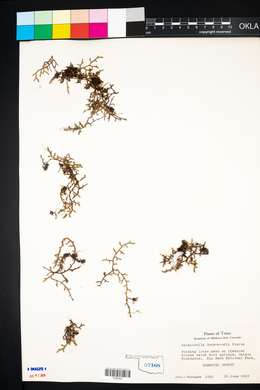Selaginella underwoodii
|
|
|
|
Family: Selaginellaceae
Underwood's Spike-Moss, more...Underwood's spikemoss, underwood spikemoss
[Selaginella underwoodii var. dolichotricha Weatherby] |
Plants on rock, forming loose festoonlike mats or rarely compact mats. Stems radially symmetric, long-creeping, short-creeping, or pendent, not readily fragmenting, irregularly forked, without budlike arrested branches, tips straight; main stem indeterminate, lateral branches determinate, spreading, 1--2-forked. Rhizophores borne on upperside of stems, throughout stem length, 0.15--0.27(--0.3) mm diam. Leaves monomorphic, in alternate pseudowhorls of 4 (on main stem and older lateral branches) or 3 (on young lateral branches and secondary branches), loosely appressed, ascending, green, linear to linear-lanceolate or narrowly triangular-lanceolate, (2--)2.5--3.4 X 0.45--0.5(--0.7) mm; abaxial ridges prominent; base mostly cuneate and decurrent, rarely rounded and adnate (on young branches), pubescent or glabrous; margins entire to denticulate or very short-ciliate, cilia transparent, scattered, mostly ascending, dentiform toward apex, 0.02--0.07 mm; apex keeled, slightly attenuate, short- to long-bristled; bristle transparent greenish to greenish-yellowish, rarely white, smooth, seldom slightly puberulent, sometimes breaking off, 0.25--0.7(--1) mm. Strobili sometimes paired, 0.5--3.5 cm; sporophylls lanceolate to ovate-lanceolate, abaxial ridges prominent, base glabrous, with prominent auricles (no other species has such prominent auricles), margins entire or very short-ciliate to denticulate, apex keeled, short- to long-bristled. Moist or shaded cliffs, rocky slopes, rock crevices, granitic outcrops, hanging over granite cliffs, sandstone or limestone ledges; (800--)1500--3000(--4000) m; Ariz., Colo., N.Mex., Okla., Tex., Utah, Wyo.; Mexico in Chihuahua and Nuevo León. R. M. Tryon (1971) reported that the bristle on Selaginella underwoodii leaves is longer (to 1.44 mm) in the southern part of the range and shorter (to 0.43 mm) northward and in central Arizona. Selaginella underwoodii seems to be closely related to S . oregana , perhaps sharing a common ancestor.
STEMS: monomorphic, prostrate to loosely ascending, occasionally pendant, not readily fragmenting when dry, the branch tips appearing straight when dry, forming usually loose mats. RHIZOPHORES: produced throughout. LEAVES: monomorphic, 2.0-3.5 mm long, linear to narrowly triangular-lanceolate, green to dark green when hydrated, the base more or less decurrent (similar in color to the stem) and more or less symmetrically narrowed, the tip with a straight or somewhat curved yellowish green seta 0.2-0.8(-1.2) mm long 44 CANOTIA Vol. 5 (1) 2009(sometimes breaking off with age), the margins short-ciliate, sometimes grading to denticulate distally. STROBILI: 5-30 mm long, the sporophylls lanceolate to broadly lanceolate with a strongly auriculate base, narrowed to an acute tip with a short seta, the margins denticulate, sometimes grading to short-ciliate proximally. MEGASPORES: finely rugose-reticulate, orange. NOTES: Rock outcrops, ledges, boulders, and cliffs, on various substrates: Cochise, Coconino, Gila, Graham, Pima, Santa Cruz, Yavapai cos. (Fig. 1G); 1500-2450 m (5000-8000 ft); UT and s CO s to AZ and TX; n Mex. REFERENCES: Yatskievych, G. and M. D. Windham. Vascular Plants of Arizona: Selaginellaceae. CANOTIA 5 (1): 39-48, 2009. FNA 1993, Dittmer et al. 1954, Kearney and Peebles 1969, Yatskievych and Windham 2009 Common Name: Underwood's spikemoss General: Spore-producing perennial herb, forming loose garland-like mats on rock; stems prostrate to loosely ascending or occasionally pendant, pinnately branching throughout; fine adventitious roots are produced throughout. Leaves: Scale-like and densely spirally arranged, covering the stems and branches; blade linear to narrowly triangular-lanceolate, 1-2 mm long, with a narrowed, decurrent base, and the tip terminating in a yellow-green bristle less than 1 mm long; margins ciliate (lined with hairs) and sometimes denticulate (finely toothed) toward the tip; leaves green to dark green when fresh, almost the same color as the stem. Sporangia: The strobili (equivalent to an inflorescence) are short sections of stem, 5-30 mm long, located at branch tips, which have sporangia (spore-cases) in the leaf axils. The leaves (i.e. scales) that subtend the spornagia are called sporophylls, and in this species they are similar to the rest of the scales except for having prominent auricles (lobes) at the base and denticulate margins which are sometimes ciliate near the base of the scale; sporangia are generally ovoid. Ecology: Found on rock outcrops, ledges, boulders, and cliffs, on various substrates, from 5,000-8,000 ft (1524-2438 m). Distribution: AZ, NM, UT, CO, s WY, w OK and w TX Notes: Selaginella is a group of plants traditionally defined as fern allies. Like ferns, they are vascular, spore-producing plants. S. underwoodii forms loose mats which are anchored to cracks in rocks and can be found hanging on the sides of cliffs. It has tiny scale-like leaves which superficially resemble those of Juniper, Cypress, or Tamarix. It will be difficult to distinguish from other species of Selaginella without a dissecting scope, so make a good collection if you need a species determination. S. underwoodii is distinguished based on the morphology of its tiny scale-like leaves: the scales are tapered at the base, decurrent on the stem, and the same color as the stem. The similar S. mutica has scales fused to the stem at the base (not decurrent), which are sharply differentiated from the stem in color, and rounded at the base. Ethnobotany: Unknown Etymology: Selaginella is a diminutive of Selago, the ancient name for clubmoss, a related plant; underwoodii is named for Lucien Marcus Underwood (1853-1907) an American botanist who studied ferns. Synonyms: Selaginella underwoodii var. dolichotricha Editor: SBuckley 2010, AHazelton 2017 |

